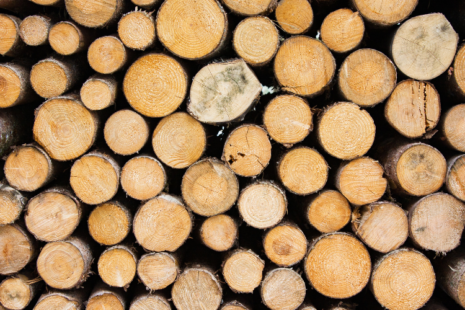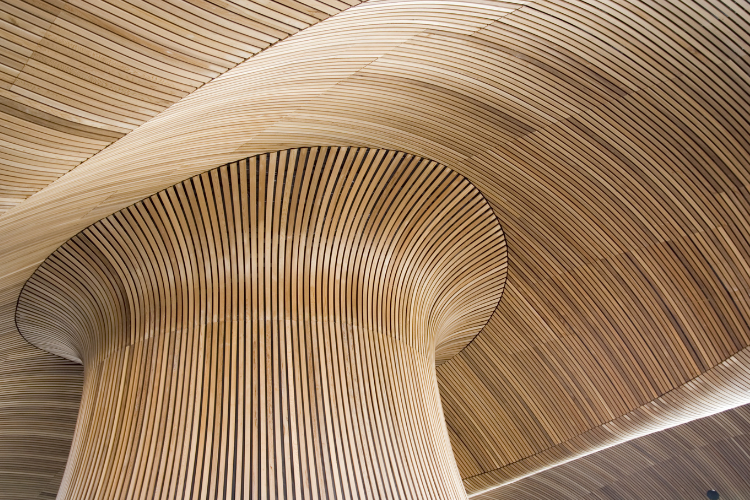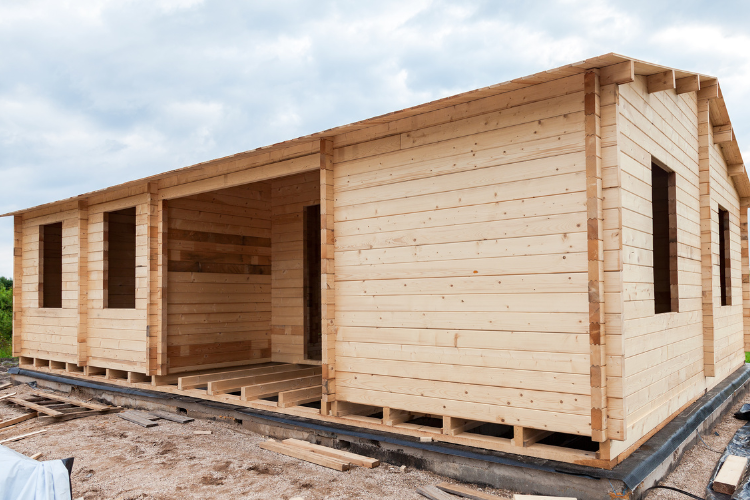Friday 24th June, 2022

Timber has been touted as one of the most versatile and sturdy materials on the planet. That’s why so many structures and outdoor buildings make innovative and beautiful use of this luxurious and refined wood – be it churches, libraries, summer houses or even office buildings. Having said that, timber is a natural material that requires proper care and maintenance. The elements can take a toll on an outdoor building. But looking after your timber buildings can really make a world of difference and keep your garden building looking its best for generations to come.
Want to get more enjoyment out of your outdoor space and extend the lifespan of your timber building? Read our guide on looking after your timber buildings.
At the end of the day, prevention is the cheapest solution and can help reduce potential repair costs. Even the most highly resistant woods can suffer under constant weathering. Left untreated, timber will continuously absorb moisture and dry out. It’s a never-ending cycle that will ultimately lead to surface cracking and wrapping. In order to slow down deterioration, it’s wise to apply a wood treatment as soon as the building has been erected. This will protect the building against weathering.
More than that, it makes sense to opt for timber that has already been treated. At Vale Stables, all our timber is pressure treated with Tanalith ‘E (BS EN 335-1). That way, you can rest easy knowing that wood preservative has already been forced deep into your timber building. This will undoubtedly make looking after your timber buildings much easier. Though, it’s still a good idea to regularly apply an additional water resistant treatment just to be on the safe side.
When it comes to applying timber treatments, make sure the building is completely dry. If the forecast says it’s going to rain, you may want to postpone application until the weather is more favourable. Equally, it’s important to make sure the weather will be dry whilst the building is drying. After all, this will ruin all your hard work. You’ll know when it’s time to apply a fresh coat based on whether water soaks into the wood. On a dry day, spray some water onto the wood. If the water rolls down as opposed to soaking into the wood, you can wait until next year to reapply the timber treatment.

In order to maximise the quality and utility of your garden building, it’s important to consider its positioning. Careful and well thought out decisions over the sitting of a garden building can really help extend its life span. For instance, simply sitting your timber building away from trees can help prevent water from dripping onto the roof. In turn, this reduces potential wood rot and other water-related damage.
Ideally, timber buildings should have around 1m of space around them. With this in mind, it’s a good idea to position your garden building away from any hedges and bushes as well. After all, even the smallest of shrubs can grow upwards and outwards and may eventually impede ventilation. If you can’t site your building away from shrubs and hedges, consider trimming any plants growing against the wood. This allows for adequate ventilation around the whole building so that the wood can dry out much faster. Another top tip for looking after your timber buildings: situate your building higher up in the garden to avoid potential drainage problems.
Lack of drainage can cause serious damage to the walls and base of your timber building. When water drips off the eaves of your garden building, it will soak the bottom of the building, resulting in damp. With this in mind, consider adding gutters to the roof of the building. This will help prevent potential deterioration and decay by directing rainwater away from the building. Plus, you can collect rainwater and use it to water plants during dry periods. Remember to regularly clean out gutters, as clogged gutters can result in costly damage to your timber building.
It’s a good idea to set your timber building on a sturdy concrete foundation that is slightly wider than the base of your building. This will help to stop rainwater and moisture from penetrating the base and prolong the life of your building.

If you want to make sure your timber building stays in good condition, it’s important to regularly clean and inspect it. That way, you can immediately nip any issues in the bud, as opposed to letting them develop and become a real headache to fix later down the line.
Don’t just check the outside of the building. It’s important to clean and inspect the inside too. A damp cloth and a mild detergent should remove any marks or bird droppings, leaving your building sparkling clean. On top of that, it’s a good idea to check around windows and doors for potential signs of water leaks and rain damage. If you notice any pieces of rotting wood, remove them straight away. After all, you don’t want it spreading to the rest of the wood.
At Vale Stables, we’re specialists in designing and building bespoke timber buildings. We’ll work with you to build the summerhouse, garden shed, or office of your dreams that will stand the test of time. If your timber building is in need of an upgrade, contact us or get a quote today.